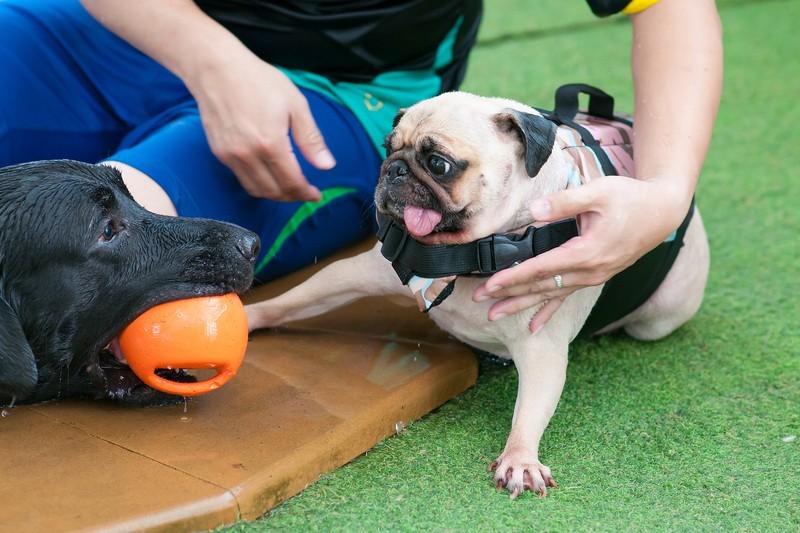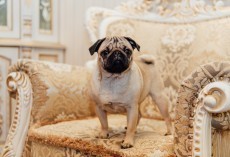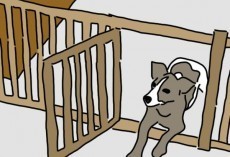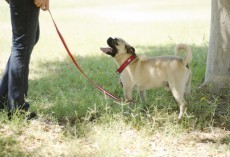A possessive dog is not necessarily a bad dog. They just need to be taught or relearn some bad behaviors. Check out some ideas to that end below.
Hire a professional trainer. Aggression is serious, and I do not want anyone to get hurt. A professional trainer will be able to evaluate your dog and tell you some additional ideas.
One of my foster dogs was showing some severe possessiveness, and even though I have a lot of experience with dogs it was nice to consult with a trainer for some extra ideas. When you don’t live with the dog, it’s easier to notice things the owner may not see.
Don’t allow possessiveness of items that “belong” to the dog. Be careful not to make excuses for your dog and allow possessiveness of objects that “belong” to him.
For example, just because the tennis ball “belongs” to the dog, that doesn’t give the dog permission to snap at someone who tries to take it. The humans should always be allowed to take anything from the dog.
I’ve had some readers tell me their dogs were possessive of stuffed animals because the dogs thought the toys were their babies. While that may be true on occasion, it’s still not OK for the dog to show aggression over a toy.
Make sure you “claim” anything you give your dog. This is not complicated or mean. It’s just a subtle communication to the dog – “OK, I see. That toy belongs to the human.”
For example, before giving your dog a toy, you could ask the dog to sit. This puts the dog into a calmer state of mind. If the dog accepts the toy in a calm state of mind, he is more likely to remain in that state and play with the toy calmly. A calm dog is less likely to become possessive and reactive.
As another example, you could ask your dog to wait before eating. Once you place the bowl on the ground, do not allow your dog to charge the bowl. Simply, ask for some space. You can do this by standing over the bowl calmly but confidently. Or, you can tell your dog to sit before you give a calm release command to get the food.
Again, this helps the dog accept the food in a calm state of mind, which is a good thing when food is involved.
While the dog is eating, you should ask him to stop and back away or sit again. This teaches the dog that you can take the food at any time. Just make sure to give the food back as a reward, or drop in something extra that’s even better like liver treats!
Teach the dog the commands “leave it” and “drop.” When practicing the trading technique above, you can incorporate a command – drop.
The dog may not drop the object right away, but as you continue practicing the trading technique, the dog will be more willing to drop the original item. This is when I recommend you start saying “drop.” The dog will already be doing the behavior, but you are adding the command.
The dog will eventually learn to “drop” on command with or without a treat. You should of course continue to use treats every now and then to keep the dog interested.
I also use the command “leave it” to mean “Do not touch.” This is easier to teach and practice, because you would give the command when the dog does not already have the object in his mouth. Then, reward the dog for showing self control and not touching the object.
With practice, you can eventually use “leave it” in many different contexts. You’ll just need to practice in different environments and with different items slowly over several weeks and months.
Do not make up excuses for your dog’s possessive or aggressive behavior. Small problems lead to bigger problems when dog owners do not take a dog’s mild aggression or possessive issues seriously.
Our pup has learned a behavior called “growly face.” It’s enough to scare visitors but the dog really is just playing. It often shows during times of play. He’s not really being aggressive or possessive because wee can walk right up to him and take the toy away and his tail wags without missing a beat.
However, for those who have a serious problem the above tips are important. For more information and further guidelines visit That Mutt.











Isaiah Robles
- Edit
the pug looks more like a Jerrie than a Fido.
Chad Sperry
- Edit
Lynn Lambdin Deinish Sperry
Kristina Kubitza
- Edit
Joe Cortes